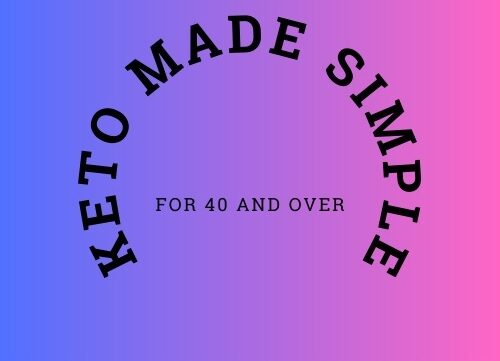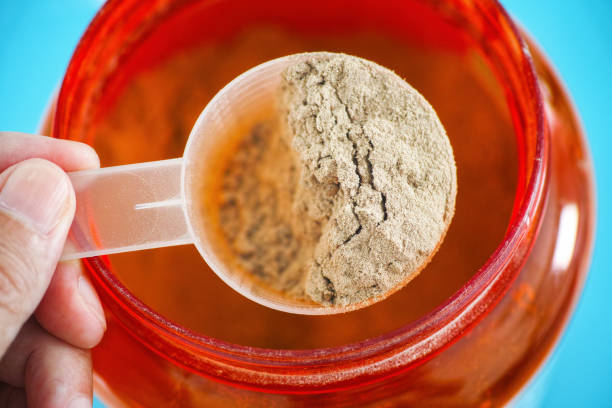Table of Contents
Keto Diet and Protein Shakes: Harmonizing Nutrition for Ketosis
When exploring a ketogenic, or keto, diet, one key component is managing your macronutrient intake—particularly ensuring sufficient protein while maintaining low carbohydrate levels to keep your body in a state of ketosis. Protein shakes can be an effective and convenient way to meet your nutritional needs on a keto diet. Finding a protein shake that fits into the keto lifestyle means looking for high-quality sources of protein with minimal carbs that can promote muscle maintenance and growth without disrupting ketosis.

Incorporating the right protein shakes into a keto regimen requires careful consideration of the ingredients and nutritional profile to avoid hidden carbs that could impede your progress. It’s not just about picking any low-carb protein shake off the shelf; it involves understanding the balance of protein, fats, and carbohydrates that align with the strict guidelines of keto. Many shakes designed for keto dieters exclude artificial preservatives and excessive sugars, focusing instead on wholesome, natural ingredients that support your dietary goals.
Key Takeaways
- Protein shakes can be a convenient way to meet keto protein requirements if they’re low in carbs.
- It’s important to choose shakes that align with keto guidelines, focusing on high protein and low carb content.
- Quality ingredients that support ketosis should be a priority when selecting keto-friendly protein shakes.
Fundamentals of Keto Diet
Understanding the basics of the ketogenic diet is essential to successfully adapting to this lifestyle. The diet primarily focuses on low carbohydrate intake, high fat consumption, and moderate protein to achieve ketosis—a metabolic state where the body burns fat for energy instead of glucose.

Benefits of the Keto Diet
The ketogenic diet has a track record for weight loss and improving metabolic health. Entering ketosis allows your body to become exceptionally efficient at burning fat, which can translate to a reduction in overall body fat. Moreover, the diet has been linked to benefits such as stabilized blood sugar levels and potential improvement in insulin sensitivity.
Role of Protein in Keto
Protein is a crucial component of the ketogenic diet; it helps preserve muscle mass during weight loss and contributes to a feeling of fullness. While your body is in ketosis, adequate protein intake supports the necessary bodily functions without knocking you out of this fat-burning state.
Protein Intake Guidelines
For protein intake on a ketogenic diet, it’s recommended to consume approximately 1.2 to 2.0 grams of protein per kilogram of body weight. Here’s a simple way to calculate your needs:
- Determine your weight in kilograms (divide your weight in pounds by 2.2).
- Multiply this number by a factor between 1.2 and 2.0, depending on your activity level (less active individuals use the lower end of the range; highly active individuals use the higher end).
This ensures that your protein consumption is sufficient to maintain muscle mass and optimize weight loss while adhering to keto guidelines.
Protein Shakes and Keto Lifestyle
Incorporating protein shakes into your ketogenic diet can optimize your nutrition and workout routines. Here’s how you can make them work effectively for your lifestyle.
Importance of Protein Shakes
Protein shakes are a convenient way to ensure adequate protein intake on a ketogenic diet, which is vital for maintaining muscle mass and supporting metabolism. They can be particularly beneficial if you find it challenging to consume enough protein through whole foods or are always on the go. Protein shakes can also help in suppressing appetite, thereby assisting with weight management.
Protein Shake Timing
The timing of your protein shake can impact its benefits. Consuming a protein shake before a workout can give you a readily available source of energy and may reduce muscle damage. Meanwhile, drinking a protein shake after exercising can aid in recovery by providing the nutrients needed for muscle repair and growth.
Keto-Friendly Protein Sources
Not all protein powders are suitable for a ketogenic lifestyle. Look for low-carb options, such as whey protein isolate, collagen, or plant-based proteins like pea or hemp. You’ll want to avoid protein powders that contain added sugars or high-carb fillers. Some low-carb, keto-friendly protein powders include grass-fed whey and collagen peptides, which offer the dual benefits of protein and other supportive nutrients while keeping your carb count in check.
Crafting the Perfect Keto Shake

Creating a keto shake that is both delicious and compliant with your ketogenic lifestyle involves choosing the right ingredients that provide high-quality fats, moderate protein, and minimal carbs. Here’s how to build your shake for optimum nutrition and taste.
Essential Keto Shake Ingredients
Base: Choose a low-carb liquid like unsweetened almond milk or coconut milk to keep carbs in check.
Protein: Add a scoop of keto-friendly protein powder; opt for ones that contain no added sugars or artificial ingredients.
Fats: Incorporate healthy fats for energy, such as MCT oil, avocado, or nut butters.
Thickener: For the creamy texture, you might use full-fat Greek yogurt or a small frozen avocado.
Table: Essential Components for a Keto Shake
| Component | Suggested Ingredients | Purpose |
|---|---|---|
| Base | Unsweetened almond milk, coconut milk | Keep carbs low |
| Protein | Keto-friendly protein powder | Muscle support and satiety |
| Fats | MCT oil, avocado, nut butters | Energy source and fullness |
| Thickener | Greek yogurt, frozen avocado | Creamy texture without the carbs |
Ingredients to Avoid
- Sugars: Stay away from added sugars and sweetened ingredients which can disrupt ketosis.
- High-Carb Fruits: Most fruits, except for small portions of berries, are too high in carbohydrates.
- Traditional Dairy: Milk and flavored yogurts often contain sugars and higher carb content.
Adding Flavor and Nutrition
Natural Sweeteners: Enhance sweetness with stevia or erythritol, both of which are low-carb.
Spices: Cinnamon or nutmeg can add depth to your shake’s flavor profile without carbs.
Seeds: For added fiber and nutrients, consider chia or flax seeds. They are also low in net carbs.
Table: Flavor and Nutritional Additions
| Addition Type | Suggested Ingredients | Nutritional Benefit |
|---|---|---|
| Sweeteners | Stevia, Erythritol | Sweetness without the carbs |
| Spices | Cinnamon, Nutmeg | Flavor without adding sugars or carbs |
| Seeds | Chia, Flax seeds | Fiber and omega-3 fatty acids |
Practical Tips for Incorporating Shakes
Incorporating protein shakes into your keto diet can help you meet your daily protein requirements and provide a convenient meal replacement. The key is choosing shakes that align with the low-carb, high-fat principles of the ketogenic lifestyle.
Shakes in a Daily Keto Routine
- Morning Boost: Start your day with a protein shake as a quick breakfast. Add a scoop of low-carb protein powder to unsweetened almond milk along with your choice of keto-friendly fats like avocado or MCT oil.
- Post-Workout Recovery: After exercise, replenish your muscles with a high-quality protein shake. Ensure it has minimal carbs and no added sugars to maintain ketosis.
- Satisfying Snack: For a mid-day snack, blend your protein powder with a handful of spinach, a few berries, and some coconut cream to keep hunger at bay while staying within your carb limit.
- Meal Replacement: Replace one meal a day with a shake if you’re pressed for time. Add a tablespoon of keto-friendly sweetener if you prefer something sweet without the extra carbs.
Remember to read labels carefully and watch for hidden carbs that can throw you off your ketogenic course. With these tips, protein shakes can be a valuable addition to your daily keto routine.
Frequently Asked Questions
In this section, you’ll learn the specifics on incorporating protein shakes into your keto diet, including choosing the right powders, understanding their role in muscle building, and managing intake for weight loss.
What characteristics should I look for in a low carb protein powder that’s suitable for a keto diet?
You should opt for protein powders with minimal carbohydrate content and no added sugars. Proteins like whey isolates or hydrolyzed proteins that have undergone a process to remove most carbs and fats are ideal.
How can protein shakes fit into a ketogenic diet for weight loss purposes?
Including protein shakes in your diet can be a convenient way to manage your protein intake without overconsuming carbs, which is essential for ketosis. Ensure that the shake fits within your daily macronutrient goals to support weight loss.
Which ready-to-drink protein shakes are most compatible with ketogenic dietary requirements?
Look for ready-to-drink protein shakes that are labeled as low-carb or keto-friendly. These products should ideally have a high protein-to-carb ratio to keep you within the keto macronutrient range.
Can consuming protein shakes on a keto diet assist in muscle building, and which ones are best?
Protein shakes can indeed assist in muscle building while on a keto diet, particularly those that are absorbed quickly, like whey protein. Your total daily protein intake should align with your muscle-building goals while maintaining ketosis.
What are some recipes for keto-friendly protein shakes that I can make at home?
Creating your own keto-friendly protein shakes is simple. You can use a base of almond milk or coconut milk and combine it with a low-carb protein powder along with your choice of keto-friendly fats like MCT oil or avocado.
How does excessive protein intake affect weight loss progress on a ketogenic diet?
Excessive protein intake can potentially inhibit your progress on a keto diet by converting excess protein to glucose through a process called gluconeogenesis, which may take you out of ketosis. It’s essential to balance your protein intake with your other macronutrients.

